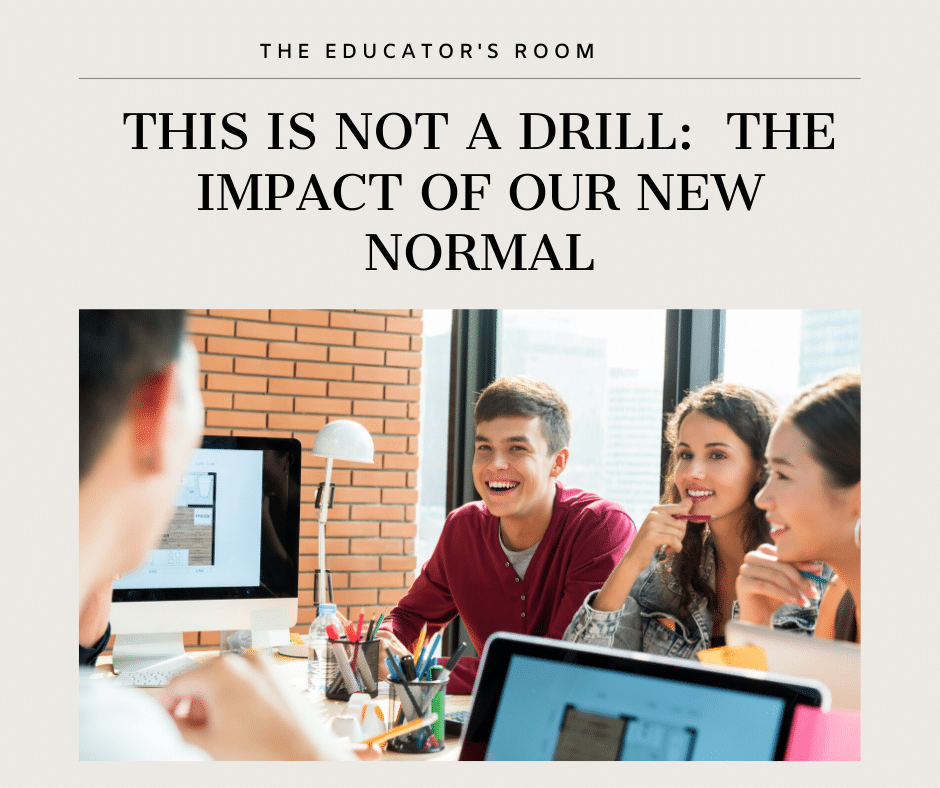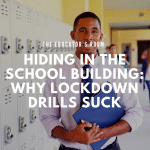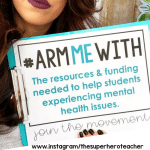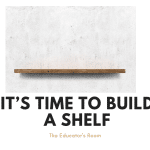Under the handle of my classroom door is a red button. That button allows teachers to secure their classrooms from the inside. Before the red button, teachers used their keys to lock their doors from the hallway. The mechanism protects us, but during the first lockdown of the school year, my red button fails to engage.
Over the public announcement system, the words: “This begins our lockdown drill,” move me towards the red button. I push it many times, but no click sounds, and then I remember being told that it does not work. My classroom location is new, near the main entrance, and extremely vulnerable. I have yet to figure out my room’s quirks; I did not anticipate the security lock, that little red button, was defunct.
Luckily, the drill is during my preparation block, and my classroom is lacking students. However, the empty room gives me pause and makes me question what I should do. The drill leaves me with more questions than with a plan action. Will I have time to lower and close the blinds in the event of a real attack? If the blinds are left up and open, anyone outside can see into my classroom. There will be no safe hiding place. If an assailant enters my classroom while I am teaching, I will not see them until it is too late to do anything but fight, or try to escape through the rescue window, that is, after I wrestle it open and remove the screen.
I sit at my desk and contemplate my death and the death of my students. After twenty-five years of teaching, fleeing violence is my curriculum and demands pedagogy. Lock-downs drills are accepted, mandated by law, required. Proponents tell us that the exercises give us a plan, just like fire drills offer. Law enforcement informs us that we, the teachers, are the first responders. We must save our children. Parents are expecting us to have a plan. The public wants us to rehearse our deaths, just in case. We live in a violent world; we must prepare for it. We must accept it.
Educators, like the Oregon football coach/security guard who recently disarmed a student, are hailed as heroes. “Dramatic Footage Show Coach Disarming and Hugging Students,” reports the New York Times. These types of incidents offer us hope, and we collectively sigh. Until the next Parkland, Sandy Hook, or Columbine, we pretend the violence will not happen in our school. And if violence comes to our hometowns, our map dots, we pray that the drills save us. We reassure each other that we have a plan, but we have genuinely no clue as to how our bodies and minds will respond.
As I sit at my desk, the one located near the window, close to the main entrance, I notice the silence. Over 1,500 individuals are meditating about violence. The security guard opens my unlocked door, peeks her head around the awkward corner that is the entryway to my classroom, finds no students, nods to me, and quickly exits. Yelling to her, I break the regulation for quiet, informing her that I did indeed press the button. I feel the need to tell her that I was following the rules. I was doing everything right, but that damn red button will not cooperate!
The drill ends with the administrator informing the participants in the mandated speech: “In the advent of a real emergency…” The building moves on, the buzz and hum of a school’s orchestra play.
The red button’s inadequacy seems like a metaphor for the futility of such drills. The responsibility of our students’ safety falls on us, the educators. We can delude ourselves in our security, but the inaction of our government is glaring. After Sandy Hook, Americans accepted that children die in schools. Today, stores sell bullet-proof backpacks.
The hurried security guard and I test the red button at the end of the day. If I push on it with excessive force, it does engage. With the illusion of a safety plan, we move on. But I am left with nagging thoughts. Are these lockdown drills only letting our legislators off the hook? Why are educators asked repeatedly to “deal” with our societies ills with limited resources? And, what impact do these drills have on our children–do they feel safer, or will they look back on these exercises like we do the duck and cover drills of the nuclear age? Or worse, are we causing unnecessary anxiety for many fragile young people?
As a history teacher, I focus on turning points and characterize eras. I can say with confidence that we are living in a new normal. We have accepted that we are a violent people and that we will bandage our wounds with drills, hopes, and prayers.






